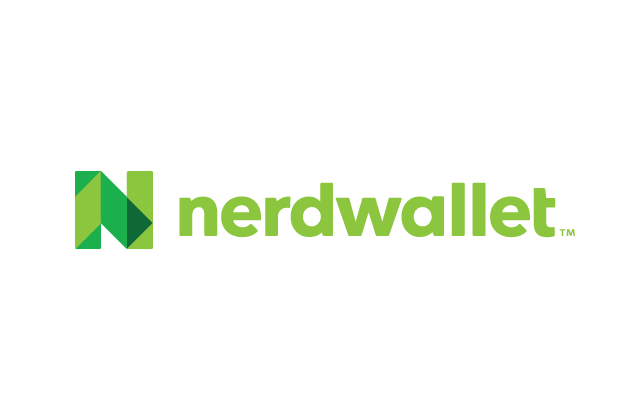Disclaimer: The rates displayed do not include any taxes, fees, insurance, or other additional charges. These rates are estimates and are not guaranteed. The actual rate and loan terms you receive will depend on our partner’s assessment of your creditworthiness, loan amounts, and other relevant factors. Please note that any potential savings figures provided are estimates based on the information you and our advertising partners have provided. Terms and conditions apply.
Mortgage Brokerage licensed in ON #13072, AB #2122265990, BC #X300983, MB #RW-2011175, NL #88786, NB #210042526, NS #2023-3000270, PEI #755902715, QC #606914, SK #508695, YT #839770
Let 8Twelve find the right mortgage lender for you
8Twelve has partnered with over 65 Canadian mortgage lenders to provide competitive rates on over 7,000 mortgage products. 8Twelve can quickly match you with a lender and mortgage type that meets your needs — even if your financial situation is unique.
Click “Explore Quote” to get started!
Saskatchewan mortgage rate update: March 2025
On March 12, 2025, the Bank of Canada reduced its overnight rate for the seventh consecutive time. The 25-basis point cut will knock 0.25% off of lenders’ variable mortgage rates and shrink the lowest variable rates in Saskatchewan down to around 3.9%.
That means variables are now around the same level as fixed mortgage rates. As of March 13, 2025, three-year fixed mortgage rates could be found for under 3.8% at some mortgage brokerages, while five-year fixed rates are as low as 3.89%.
Historically, those are approachable rates. But the current economic climate, particularly the unpredictable tariff war we find ourselves in, means Saskatchewan’s home buyers may stay on the sidelines until they feel they’re on firmer financial footing. It’s hard to sign on to a mortgage if you’re not sure you’ll have a job at the end of the year.
For buyers who are confident that their income is secure, it’s actually not a bad time to be in the market. Inventory is rising, demand is soft and mortgage rates are lower than they’ve been in about two years.
Saskatchewan wasn’t immune to the slowdown in home sales seen in the rest of the country in February 2025. Sales dipped 0.9% year-over-year. It’s an almost imperceptible decline, but February was the first month to post a sales decline in recent memory.
New listings and active inventory both fell dramatically last month, which put upward pressure on home prices. The provincial benchmark price in February, $344,700, rose 4.6% year-over-year.
Saskatchewan home sales and price forecast
In 2024, falling variable mortgage rates gave Saskatchewan’s home buyers some relief. Buying a home in 2025 may not be so easy.
If the Bank of Canada keeps cutting in 2025, some rate relief would follow. On the other hand, home prices have remained stubbornly high, even amid high rates. Would a more active market push home prices even higher, offsetting the benefit of lower rates? Will another factor, like a pathway to increased housing supply, break the logjam?
Untangling these questions isn’t easy, but real estate pros try to factor in these and other variables as they make forecasts for the coming year.
A survey of RE/MAX agents and brokers suggested that prices will rise slightly (3%) in Regina after jumping 6% in 2024. They cited first-time buyers, who may have greater financial flexibility after gaining greater access to 30-year amortization last year, as fueling demand. Those buyers will still face a limited supply of available homes, however.[1]
Real estate brokerage Royal LePage projects a “more balanced market compared to the frenzied conditions of 2021 and 2022,” with home prices trending “modestly upward.” Phil Soper, president and CEO of Royal LePage, wrote in a press release that he expects the Bank of Canada to cut another 100 basis points from its overnight by the end of 2025, which would further push down borrowing costs for those with variable rates.[2]
The forecast notes the mismatch between low supply and high demand as a driving factor behind Saskatchewan’s rising prices; the company projects a 9% increase in aggregate home price in the fourth quarter of 2025 compared to the same quarter in 2024.
Historical Trend: New mortgage loans in Saskatchewan
The average mortgage rate in Saskatchewan
There’s not much value in calculating the average mortgage rate in Saskatchewan since it would include every mortgage type and term length from every lender, including the above-average rates associated with open mortgages and private mortgages.
The only rates that matter are the ones attached to the mortgage you hope to be approved for. If you’re interested in a variable-rate mortgage, for example, compare variable mortgage rates. If you’re looking for more stability, compare fixed rates according to term length. Specific comparisons like these will give you more relevant information to work with.
Your mortgage rate will ultimately be determined by your finances, so it doesn’t really matter what other people are paying.
2025 Saskatchewan mortgage rate forecast
Variable mortgage rates
After the Bank of Canada’s fifth consecutive overnight rate cut on December 11, 2024, variable mortgage rates were down 1.75% since June. That’s a lot of action from a central bank with a conservative reputation.
The Bank likely won’t be as aggressive in 2025, as it has to wait for its most recent cuts to work their way through the economy. The overnight rate might decrease by another 50 basis points in the first half of 2025, which would bring variable mortgage rates down by another 0.5%.
Fixed mortgage rates
Because they’re determined by the government bond market, which is driven by investors’ decisions, fixed mortgage rates can be difficult to project over the long-term.
The mortgage brokers NerdWallet spoke to at the end of 2024 all expect fixed mortgage rates to remain relatively static for the next several months. That assumption, however, flies in the face of evidence from the government bond market. Bond yields, which determine fixed mortgage rates, cratered for three weeks straight starting on November 21. When yields fall consistently, it gives lenders the wiggle room to lower their fixed rates.
So, fixed rates could fall to begin the year, but lenders might keep them at current levels for a strategic reason: Lower fixed rates might entice home buyers away from the more expensive variable-rate mortgages they’ve been gobbling up to end 2024.
Mortgage calculators to inform your home buying decision
Saskatchewan first-time home buyer programs
There aren’t many provincial programs available to eligible first-time home buyers in Saskatchewan. Two of the only ones still available are:
- The Mortgage Flexibilities Support Program, which allows homeowners earning income below certain thresholds to access new unis in designated housing projects in Saskatoon.
- The First-Time Home Buyers’ Tax Credit, which provides a tax credit worth up to $1.050 to eligible taxpayers.
First-timers in Saskatchewan can also make use of federal programs like the Home Buyers’ Plan and the First Home Savings Account.
Land transfer taxes in Saskatchewan
Saskatchewan doesn’t charge home buyers a land transfer tax. Instead, home buyers must pay two registration fees as part of their closing costs:
- The cost to register a transfer of title is 0.4% of the purchase price. A home worth $300,000 would cost $1,200.
- The cost to register a mortgage depends on the mortgage amount. The cost to register a mortgage worth between $250,000 and $500,000 is $250 per title for the first four titles. For a mortgage worth $500,000.01 and $750,000, the cost is $500 per title. For a fifth title, the registration fee drops to $55 regardless of the mortgage amount.
Guide to Saskatchewan mortgage rates
Types of lenders in Saskatchewan
Mortgage lenders in Saskatchewan tend to fall into four categories, which include:
- Large chartered banks such as Scotiabank, RBC and TD.
- Credit unions such as Affinity Credit Union and Conexus Credit Union.
- B lenders that work with borrowers with lower credit scores, such as True North Mortgage and Neo Financial.
- Private lenders, who typically deal with borrowers in need of short-term funding.
Types of mortgages in Saskatchewan
Fixed-rate mortgages
With a fixed-rate mortgage, the rate stays the same for the duration of the mortgage term, even if rates fluctuate.
Fixed rates provide certainty, which can make them easier to budget around than variable mortgage rates. That certainty comes at a price, though: Outside a few exceptions, fixed rates have historically been higher than variable rates.
Variable-rate mortgages
Variable mortgage rates rise or fall depending on which direction your lender’s prime rate moves. Depending on the state of the economy, a variable rate can increase or decrease multiple times during a mortgage term.
Variable rates are risky, which is why they’re typically lower than fixed rates. In a high-inflation environment, when lenders’ prime rates are driven upward by increases to the Bank of Canada’s overnight rate, variable mortgage rates can skyrocket.
» MORE: The difference between fixed- and variable-rate mortgages
Hybrid-rate mortgages
If you take out a hybrid-rate mortgage, a portion of your mortgage is subject to a variable rate and another portion is at a fixed rate of interest. Hybrid mortgages can dampen the impact of fluctuating interest rates in a particularly turbulent economy, but they tend to be more difficult to transfer between lenders.
Insured and uninsured mortgages
If you buy a home for under $1 million, and your down payment is less than 20% of the purchase price, you must purchase mortgage default insurance, which adds to the cost of your loan. In these cases, you’ll be getting an insured mortgage.
If your down payment is greater than 20%, or you’re buying a home where a 20% down payment is required, like an investment property or a home worth $1 million or more, insurance is not required. In this scenario, you’re getting an uninsured mortgage.
Insured mortgage rates tend to be lower than uninsured mortgage rates.
Short-term and long-term mortgages
Short-term mortgages typically last five years or less. Long-term mortgages last over five years. With a shorter term, you’ll need to renew your mortgage sooner, which can provide flexibility, but it can also increase risk if rates are trending upward as your renewal date approaches.
Closed and open mortgages
The primary difference between closed and open mortgages is that you can pay off an open mortgage whenever you like and not pay a penalty. If you have a closed mortgage and make additional payments that go beyond your pre-payment allowances, you’ll be penalized for breaking your mortgage.
Closed mortgages often offer better rates than open mortgages. But an open rate mortgage may be a good option if you think you may be able to pay off your mortgage early.
» MORE: Understanding open and closed mortgages
How Saskatchewan lenders determine mortgage rates
The mortgage rate you’re offered by a lender in Saskatchewan will be based on two primary factors; one based on the state of the economy and one based on your financial situation.
Economic factors
Variable mortgage rates are influenced by the Bank of Canada’s overnight rate. When the overnight rate increases or decreases, a lender’s prime rate follows suit. Variable mortgage rates are based on a lender’s prime rate, so as the prime rate rises or falls, so do variable rates.
Fixed mortgage rates are determined by activity in the government bond market, particularly the yields on one-, three- and five-year bonds. Fixed mortgage rates follow the movement of those yields.
Your financial situation
Factors specific to you also affect the rates you’re offered. These include:
- Your credit score.
- Your income.
- Your total debts.
- The loan type you choose.
- The amount you’re borrowing.
- The term length and amortization period of your loan.
Lenders look for signs of risk when assessing these aspects of your finances. The riskier they perceive you to be as a borrower, the higher the rate they’re likely to offer you.
How to qualify for a lower mortgage rate in Saskatchewan
Some of the mechanisms that shape rates are beyond your control, but there are steps you can take to convince lenders to offer you the best mortgage rates. For example, you can try:
- Improving your credit score. A higher credit score generally results in better loan offers. Get a better score by eliminating existing debt and paying future bills in full and on time.
- Increasing your income. It’s not always easy, but any additional income you can earn will improve your financial position. Lenders look at your income to assess your ability to afford a mortgage.
- Decreasing your total debts. Lenders consider your total debt load when determining your mortgage rate. Pay down personal loans, student loans or other types of debts if you can.
- Consider all your mortgage options. See if adjusting the loan type, the term length or the amortization period of your loan could result in you being offered a better rate.
Factors that affect mortgage affordability in Saskatchewan
A home’s price and the rate you’re offered aren’t the only factors that affect how much mortgage you can afford. You’ll also have to account for the following components, which play a role in all mortgages.
Debt service ratios
Lenders use debt service ratios to determine how much of your income goes toward paying debt. If those ratios are too high, you may not qualify for the mortgage amount you need.
Car loans, credit cards and lines of credit are all examples of debt that require regular payments. Decreasing some of these balances, or relying less heavily on credit, can help you lower your debt service ratios.
The mortgage stress test
You will have to pass the mortgage stress test if you want a home purchase funded by a federally regulated financial institution.
The rules of the stress test say you must qualify for a mortgage at a minimum qualifying rate of either 5.25% or the rate you’re offered plus 2%, whichever is higher. If a lender offers you a rate of 5%, for example, you’ll have to demonstrate you can afford the same mortgage at 7%.
You may be able to avoid the stress test if you apply for a mortgage with a lender that is not federally regulated, like a credit union.
Your down payment
Your down payment is a critically important factor in determining mortgage affordability. The more you can put down, the less you’ll need to borrow. Your monthly mortgage payment will likely be smaller, and you’ll pay less in interest.
Mortgage term
The term is the length of time your mortgage contract is valid. In Canada, mortgage terms can run anywhere from six months to as long as 10 years.
Chances are that your mortgage will have multiple terms during the amortization period until you pay it off in full. Once your mortgage term ends, you can pay your loan off in full, renew it or refinance it.
Amortization period
A mortgage’s amortization period is the time it will take to pay off the loan in full. In Canada, the most common amortization period is 25 years. If your down payment is less than 20%, you can’t have an amortization beyond 25 years.
If your down payment is greater than 20%, you may find some lenders willing to offer amortization periods of up to 35 years.
Why would you want a longer amortization period? The longer your mortgage lasts, the smaller your monthly payment will be. You’ll pay more in interest, but that might be a worthwhile trade-off if it helps you keep your home.
How to compare mortgages from Saskatchewan lenders
Use APR for greater accuracy
The annual percentage rate (APR) includes fees and closing costs the lender may charge in addition to the interest rate. A lender offering the lowest rate may actually have a higher APR due to those additional costs. Comparing APRs is the easiest way to see the complete cost of each offer.
Compare similar mortgages
For a comparison to be useful, the mortgages should have the same term, amortization period and payment frequency.
When looking for the best mortgage rates in Saskatchewan, also consider:
- Mortgage type.
- Ease of application.
- Prepayment penalties.
- Customer service.
- Any other fees not included in the APR.
Working with a mortgage calculator can help you compare different mortgages in a single place.
Frequently asked questions about Saskatchewan mortgage rates
As of March 2025, some mortgage brokerages in Saskatchewan are offering three- and five-year fixed rates and variable mortgage rates for around 4%, depending on where you apply.
Mortgage rates are expected to decrease somewhat in the first half of 2025. The Bank of Canada might reduce its overnight rate another two times, which would lower variable mortgage rates by 0.5% versus today’s levels. Fixed mortgage rates will likely continue hovering between 4% and 4.5%. for much of next year.
DIVE EVEN DEEPER

Current Mortgage Rates in Canada
Compare current mortgage rates to find the lowest mortgage rate for your home buying needs.

Calculator: How Much Mortgage Can You Afford?
Use our mortgage affordability calculator to see how your interest rate, down payment and debt ratios affect your housing budget.

Understanding B-Lender Mortgages
If the chartered banks, or A-lenders, turn you down for a mortgage, there’s an entire industry of B-lenders you can turn to for your financing needs.

NerdWallet Canada’s Mortgage Reviews
Shopping for a mortgage? We’ve reviewed Big Banks, brokers, B Lenders and online-only lenders — along with some of their most popular products — to help you finance your home purchase, refinance or renewal with confidence.

